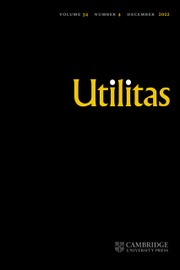Much has already been written about Scanlon's What We Owe to Each Other (WWO). Most of the secondary literature has been very critical, but this only speaks to the book's greatness. Its rich discussions cannot be ignored or views easily refuted. In this review, I hope to provide some guidance to the insights of WWO, and also to direct attention to the passages that are generating the most interesting debates.
The key for understanding WWO lies immediately in its Introduction, where the goal of the inquiry and the suitable metaethical framework for pursuing it are set up. WWO is primarily about moral wrongness. According to Scanlon, we all understand the meaning of wrongness claims. In making such claims we are taking certain acts to be such that by doing them we would ‘violate important standards of conduct’ and would thus be ‘open to serious criticism’ (p. 10). The philosophical question then is: what would the essence of the property of wrongness, denoted by our term, have to be like in order for it to explain why it is so important that we do not do these acts and why we resent it so strongly when others do them? It is this question that the contractualism of WWO attempts to answer (p. 12).
Part 1 is largely stage-setting. If wrong acts violate important standards of conduct, then there must be good reasons for avoiding them. In chapter 1, Scanlon provides his general account of practical reasons for the later purpose of describing the reasons related to wrongness. For him, ‘a reason’ is the basic normative notion. Claims about reasons for judgement-sensitive attitudes (beliefs, intentions, etc.) cannot be analysed further, but only elucidated with corresponding claims about which considerations count in favour of our attitudes. Scanlon defines a sense of rationality which explains how rational agents are motivated by their reason-judgements without prior intermediating desires, and which does not make acting against the best reasons necessarily irrational. He even attempts to give an epistemology, in the form of procedural criteria, for making true reason-judgements, but remains non-committal about the nature of such truths and the nature of the mental states resulting from the reason-judgements. The implications of such quietism for his overall view remain largely unexplored.
In chapter 2, Scanlon argues against the idea that the property of wrongness could be reduced to particular (negative) value-properties by arguing that value-properties are not reason-providing as is often assumed. Because wrongness is reason-providing, it cannot then be reduced to non-reason-providing value-properties. This chapter has become much debated for its ‘buck-passing’ account of value, according to which to be valuable and to be good are ‘higher-order properties of having some lower-order properties that provide reasons of the relevant kind’ (p. 97). Chapter 3 is devoted to understanding the value-property of well-being and why it cannot ground the fundamental moral property of wrongness.
Chapters 4 and 5 are the crucial ones. Here Scanlon describes and defends his own contractualist proposal of what the nature of the property of moral wrongness essentially is. According to this proposal, to be wrong is to be forbidden by a set of principles no one could reasonably reject (p. 153). In determining whether an act has the latter property, we need to imagine what kind of lives would be created for different individuals by a general adoption of different sets of moral norms (p. 195). We then compare individually the objections different agents have, based on the burdensomeness of their lives, against the respective sets of norms. The non-rejectable set is the one which is such that there are stronger personal objections to all other sets.
This section of WWO is the most misunderstood. It is, again and again, claimed that Scanlon's view is redundant, empty of substance, or gets the explanatory story backwards because wrongness itself and other related properties are reasons to reject principles. This is not true. Because Scanlon provides a substantive, non-circular account of what he means by reasonable rejectability, his view has substantial normative consequences. This is proved in the interesting discussions of whether it is contractualism's or consequentialism's prescriptions that better fit our considered judgements in situations involving different-sized groups threatened by different kinds of harms.
After Scanlon has described the contractualist property he takes to be the property of wrongness, he has two central tasks. First, he needs to describe the reasons this property provides for us against the given acts. These reasons are based on our reasons to act in a way that recognizes others’ morally equal status as practical reasoners and on the valuable type of moral community we can thus create (pp. 153–8). The second task is to explain how these reasons match in strength the strong reasons we assume there are not to do wrong acts, and how they fit our practice of criticizing those who act wrongly (pp. 158–68). I leave it to others to judge the success of these efforts. But if they are successful, then Scanlon could claim that he has captured the essence of moral wrongness by describing a moral property which plays its normative role.
The last three chapters apply this view to different discussions in ethics. Chapter 6 discusses what implications the view has for the substantive moral responsibilities of agents. Chapter 7 attempts to explain our obligations to keep our promises in the framework, and the final chapter discusses the view's implications for the relativism debates.
Unfortunately, it is difficult in a short space to do justice to a book which already is a philosophical classic. WWO covers a lot of ground in a detailed and rigorously argued way. Yet I hope that I have been able to extract the main line of argument, often lost in discussions, to guide at least new readers. I also hope that the wait for Scanlon's next book is not as long as it was for this one.


